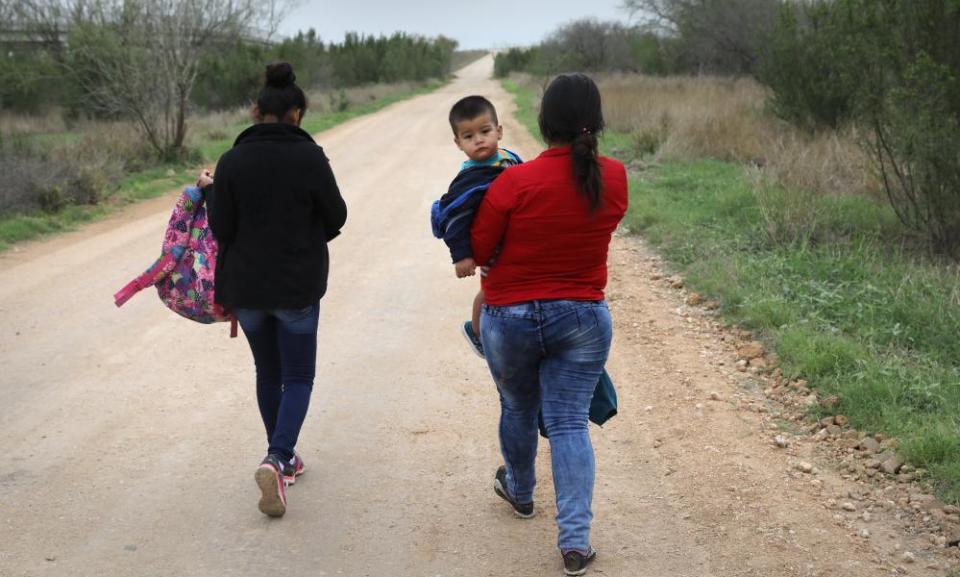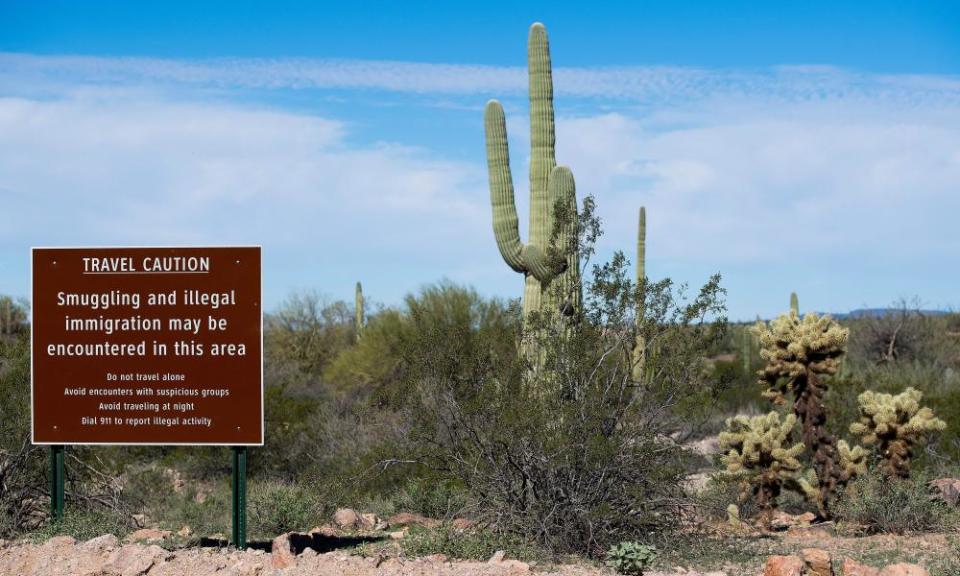Asylum seekers routinely turned away from ports of entry, advocates say
The US government has urged migrants to use official border posts but at remote crossings they are often left frustrated

After the death of seven-year-old Jakelin Amei Rosmery Caal Maquin, the US Department of Homeland Security asked parents to “not put themselves or their children at risk attempting to enter illegally”. Instead they urged: “Please present yourselves at a port of entry and seek to enter legally and safely.”
But what the US authorities failed to acknowledge after the young girl’s death just after she was taken into US custody, was just how difficult it is to ask for asylum at any port of entry into the US along the sprawling border with Mexico.
Those seeking asylum – like Guatemalan migrants Jakelin and her father – face a difficult task in actually making a claim, something that often forces migrants to instead risk their lives in illegal treks across the desert. This is especially true at the more than 40 smaller border crossings, such as the one nearest to where the Maquins crossed.
Advocates say it has become increasingly and deliberately difficult to claim asylum at these remote spots. Migrants are often illegally turned away, despite a constant threat of violence from drug gangs, traffickers, smugglers and even the local police. They say that it is only when local activists try to exert pressure on border officials that asylum claims are logged. When no one is watching, it becomes almost impossible.
Just take Alberto’s example. If Alberto, who does not want his real name used out of a fear of retribution, had known the extent of cartel control in the small Mexican border town before he showed up there one month ago, he says he never would have come.
“I would have stayed in Mexico City and asked for asylum there,” he said. But by the time he was kidnapped, thrown out of a truck with a bag over his head, and told he would be killed if the men with guns ever saw him again, it was too late. Alberto had to seek asylum immediately.
Alberto spent a sleepless week at a northern Mexican shelter, trying to figure out how to present an asylum claim. He heard from a Nicaraguan man that the nearest US port of entry, Lukeville, was not accepting claims and that border agents had thrown out the man by his shirt collar. But Alberto tried anyway. On 28 November, he presented himself to make a claim with accompaniment from the shelter. He too was turned away, after officials told him Lukeville was not a 24-hour port of entry and despite his fears he could be killed for hanging around on the border.

Antelope Wells, the closest port of entry to where Jakelin and her father crossed, receives possibly the least amount of traffic of any port of entry across the US-Mexican border. “There is literally nothing there,” said Nia Rucker of the New Mexico American Civil Liberties Union (ACLU).
Those who monitor the border describe just how hard making a claim there can be. Juan Ortiz, a University of Arizona PhD candidate, took the four-hour drive from Tucson on 17 December to see Antelope Wells for himself. The two border officers on duty that day told him they would discourage people from seeking asylum there at a port with such limited capacity.
Experts and advocates up and down the border share a similar skepticism of small border posts. Though US border officials say asylum seekers are being accepted at all border ports of entry, activists who have tested the system paint a similar picture of US officials unwilling or unable to accept asylum claims – no matter that the administration is asking migrants to present themselves there.
Francisco Lemus of the Aguilas del Desierto was told at Tecate, California, that claims could only be processed in San Ysidro or Calexico. Christina Patiño Houle of the Equal Voices Network said Progreso, Texas, had not been accepting claims, nor had Roma, Texas, last time she checked. Instead they were sending asylum seekers to Hidalgo, Texas, the border town to Reynosa, which has been dubbed “the migrant kidnapping capital” of Mexico.
At other small posts such as Sasabe, Arizona, and Del Rio, Texas, local advocates had not heard of any migrants recently seeking asylum.
Activists with legal not-for-profits simply do not have the resources to consistently monitor these remote outposts.
Mayor Ramón Rodríguez Prieto of Puerto Palomas, Chihuahua, has not yet even tried to pressure officials across the border in Columbus, New Mexico, to accept asylum claims. Three weeks ago three separate families showed up to his small municipal shelter reporting that they had been turned away.
Further south, in Piedras Negras, Catholic priest José Guadalupe Valdés Alvarado, or “Padre Pepe”, feels as if he himself is responsible for keeping the Eagle Pass, Texas, port of entry open. He runs the migrant shelter there and some days only one person is let in, others up to 10.
Border agents have told Valdés Alvarado that whether the port of entry accepts asylum seekers depends on whether he maintains order, that no one storms the wall or tries to cross the river. So the priest works hard, educating migrants on credible fears, pre-screening them before taking their names. The border agents’ word is not a guaranteed assurance, though: as an approaching caravan of migrants began to dominate headlines before the US midterm elections Eagle Pass stopped accepting asylum claims for the better part of a week.
Activists supporting the port of entry between Agua Prieta and Douglas, Arizona, also felt the impact of the caravan. The small, under-the-radar port had shuttled families with young children up to 10 at a time. But the number of asylum seekers received dropped substantially in mid-November. And when they began to bring a group of Central American transgender women to present themselves for asylum, the number of accepted claims lowered to just two per day.
Local attorney Perla Ramos said that all of a sudden, asylum seekers had to wait all night outside to enter the facility. Some women became ill, others got sick in the cold desert air.
Ramos isn’t afraid of Douglas closing its doors entirely. Groups on either side of the border have strong connections between churches, legal clinics and other solidarity organizations. They will try to keep a trickle of claims flowing.
But elsewhere on the border, Alberto has moved on. With outside support, Alberto was safely transported to a larger port of entry with legal teams, clergy, shelter coordinators and others ensuring that asylum claims there were being accepted. He was placed on a list, his number was called, and he is now awaiting an asylum hearing in detention.
He hopes it will work: “I mean, if I don’t get in now, I’m going to have to try again.” He admitted he feels that he has no other options. “If I didn’t die this time, I probably will next time. I don’t want that. It’s just really hard,” he said.

